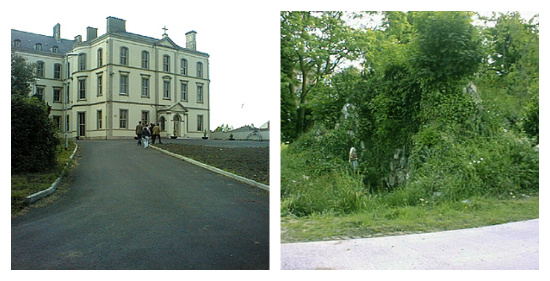
Like most people with any sense of humanity and compassion, I was horrified when the stories about Ireland's Magdalen Laundries were first widely discussed. But one story in particular made me feel physically sick. It was the story of a girl who escaped from High Park on Gracepark Road in Drumcondra, one of the most infamous Laundries. She got as far as Griffith Avenue before being found and returned to the convent.
The story haunted me because I could visualise her brief journey so well. It was part of my route to school. Almost every day for five years, I had nonchalantly strolled past the place where a terrified girl had been captured and sent back to what was basically a forced labour camp. A forced labour camp where I'd happily played as a kid.
I can't remember a time when I wasn't familiar with High Park. I grew up in an estate opposite the convent grounds, and, along with many local residents, we went to Mass in the convent's pretty Victorian chapel every Sunday. One of my earliest memories is of jumping down the steps of the chapel's beautifully carved choir stalls pretending to be Professor Yaffle, the woodpecker from Bagpuss.
The grounds of High Park were large and full of fields and trees - as well as a grotto, which was fun to climb around, there were also cows and meadows full of wild flowers. We used to go for nature walks around the grounds, collecting leaves and flowers and looking out for squirrels.
We never paid much attention to a group of large, now disused buildings, one of which was referred to as the laundry. We always assumed it had just been where the nuns did their washing in the days before washing machines. Nor did we pay much attention to the house near the entrance to the grounds, which was, I always thought, just another of several children's homes adjoining High Park.
Advertised
It wasn't until the '90s that I realised what High Park really was. That the place where we ran around picking flowers and climbing trees had, for decades, been a forced labour camp for girls and young women. I remember how sick I felt when I realised that the old ladies who seemed to live at the convent and who shuffled into the back of the church at Mass each week were actually grown up Magdalens, who had stayed so long they had become completely institutionalised. They looked ancient, their eyes were blank, but they were probably younger than they looked.
Last week the McAleese report highlighted the extent of the Magdalen laundries control over young women, and how the Irish state contributed to the system. And once again I felt the same mixture of guilt and sickness as I did when I realised my childhood playground had been a prison for girls less fortunate and privileged than me.
The convents may have run the laundries, but the whole country turned a blind eye - when it wasn't actively supporting the regime by sending girls there or using the laundries.
Apologising to the women who survived those places is the least we can do, and it's shocking that Enda Kenny didn't do it on behalf of the state last week. Instead, he seemed to think it was most important to stress that the "stigma" of sinfulness was unfair to the women - as if anyone in their right mind still thought these women were somehow tainted.
Advertised
But it's not too late for the government to offer the women who lived in High Park and its equivalents all over the country a full apology. It won't make up for all the decades our country abandoned these women. But it's the very least we can do.
images via magdalenelaundries.com, journal.ie





